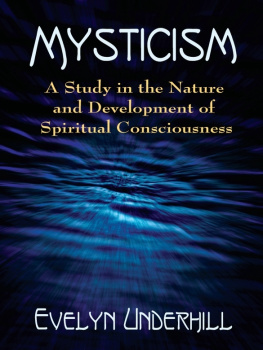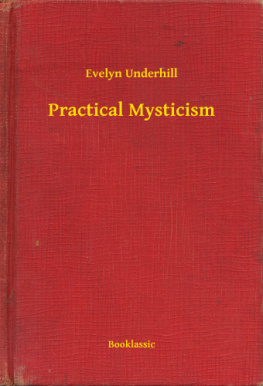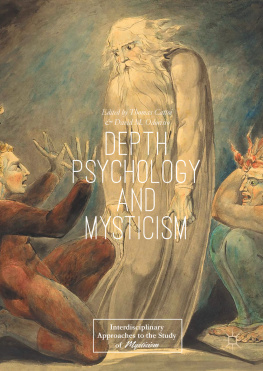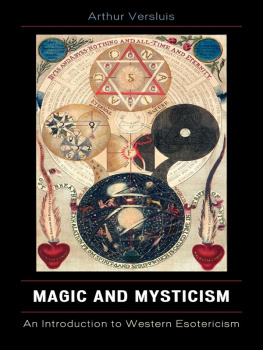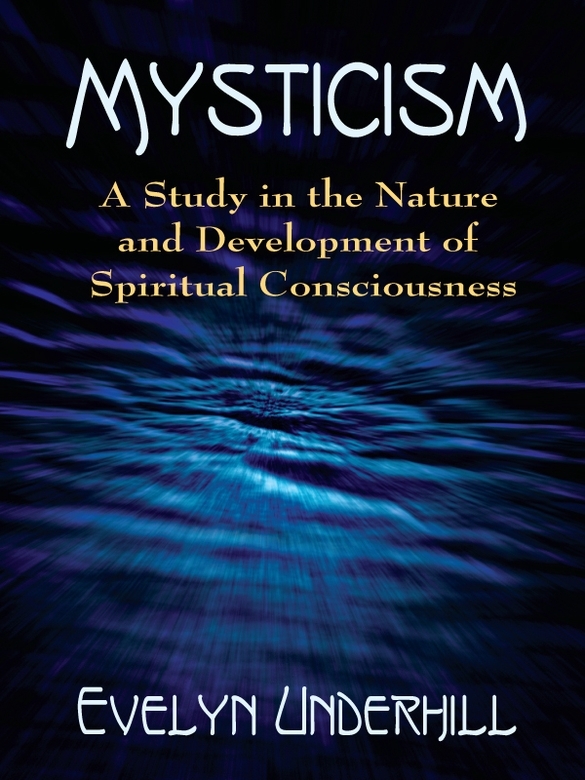APPENDIX
A HISTORICAL SKETCH OF EUROPEAN MYSTICISM FROM THE BEGINNING OF THE CHRISTIAN ERA TO THE DEATH OF BLAKE
I F we try to represent the course of Mysticism in Europe during the Christian period by the common device of a chronological curve, showing by its rises and falls as it passes across the centuries the absence or preponderance in any given epoch of mystics and mystical thought, we shall find that the great periods of mystical activity tend to correspond with the great periods of artistic, material, and intellectual civilization. As a rule, they come immediately after, and seem to complete such periods: those outbursts of vitality in which man makes fresh conquests over his universe apparently producing, as their last stage, a type of heroic character which extends these victories to the spiritual sphere. When science, politics, literature, and the artsthe domination of nature and the ordering of lifehave risen to their height and produced their greatest works, the mystic comes to the front; snatches the torch, and carries it on. It is almost as if he were humanitys finest flower; the product at which each great creative period of the race had aimed.
Thus the thirteenth century expressed to perfection the mediaeval ideal in religion, art, philosophy, and public life. It built the Gothic cathedrals, put the finishing touch to the system of chivalry, and nourished the scholastic philosophers. It has many saints, but not very many mystics; though they increase in number as the century draws on. The fourteenth century is filled by great contemplatives; who lifted this wave of activity to spiritual levels, and brought the intellectual vigour, the romance and passion of the mediaeval temperament, to bear upon the deepest mysteries of the transcendental life. Again, the sixteenth century, that period of abounding vitality which left no corner of existence unexplored, which produced the Renaissance and the Humanists and remade the mediaeval world, had hardly reached its full development before the great procession of the post-Renaissance mystics, with St. Teresa at their head, began. If life, thenthe great and restless life of the racebe described under the trite metaphor of a billowy sea, each great wave as it rises from the deep bears the mystic type upon its crest.
Our curve will therefore follow close behind that other curve which represents the intellectual life of humanity. Its course will be studded and defined for us by the names of the great mystics; the possessors of spiritual genius, the pathfinders to the country of the soul. These starry names are significant not only in themselves but also as links in the chain of mans growing spiritual history. They are not isolated phenomena, but are related to one another. Each receives something from his predecessors: each by his personal adventures enriches it, and hands it on to the future. As we go on, we notice more and more this cumulative power of the past. Each mystic, original though he be, yet owes much to the inherited acquirement of his spiritual ancestors. These ancestors form his tradition, are the classic examples on which his education is based; and from them he takes the language which they have sought out and constructed as a means of telling their adventures to the world. It is by their help too, very often, that he elucidates for himself the meaning of the dim perceptions of his amazed soul. From his own experiences he adds to this store; and hands on an enriched tradition of the transcendental life to the next spiritual genius evolved by the race. Hence the names of the great mystics are connected by a thread; and it becomes possible to treat them as subjects of history rather than of biography.
I have said that this thread forms a curve, following the fluctuations of the intellectual life of the race. At its highest points, the names of the mystics are clustered most thickly, at its descents they become fewer and fewer, at the lowest points they die away. Between the first century A.D. and the nineteenth, this curve exhibits three great waves of mystical activity besides many minor fluctuations. They correspond with the close of the Classical, the Mediaeval, and the Renaissance periods in history: reaching their highest points in the third, fourteenth, and seventeenth centuries. In one respect, however, the mystic curve diverges from the historical one. It rises to its highest point in the fourteenth century, and does not again approach the level it there attains; for the medival period was more favourable to the development of mysticism than any subsequent epoch has been. The fourteenth century is as much the classic moment for the spiritual history of our race as the thirteenth is for the history of Gothic, or the fifteenth for that of Italian art.
The names upon our curve, especially during the first ten centuries of the Christian era, are often separated by long periods of time. This, of course, does not necessarily mean that these centuries produced few mystics: merely that few documents relating to them have survived. We have now no means of knowing, for instance, the amount of true mysticism which may have existed amongst the initiates of the Greek or Egyptian Mysteries; how many advanced but inarticulate contemplatives there were amongst the Alexandrian Neoplatonists, amongst the pre-Christian communities of contemplatives described by Philo , the deeply mystical Alexandrian Jew (20 B.C.A.D. 40), or the innumerable Gnostic sects which replaced in the early Christian world the Orphic and Dionysiac mystery-cults of Greece and Italy. Much real mystical inspiration there must have been, for we know that from these centres of life came many of the doctrines best loved by later mystics: that the Neoplatonists gave them the concepts of Pure Being and the One, that the New Birth and the Spiritual Marriage were foreshadowed in the Mysteries, that Philo anticipated the theology of the Fourth Gospel.
As we stand at the beginning of the Christian period we see three great sources whence its mystical tradition might have been derived. These sources are Greek, Oriental, and Christian i . e ., primitive Apostolicdoctrine or thought. As a matter of fact all contributed their share: but where Christianity gave the new vital impulse to transcendence, Greek and Oriental thought provided the principal forms in which it was expressed. The Christian religion, by its very nature, had a profoundly mystical side. Putting the personality of its Founder outside the limits of the present discussion, St. Paul and the author of the Fourth Gospel are obvious instances of mystics of the first rank amongst its earliest missionaries. Much of the inner history of primitive Christianity still remains unknown to us; but in what has been already made out we find numerous, if scattered, indications that the mystic life was indigenous in the Church and the natural mystic had little need to look for inspiration outside the limits of his creed. Not only the epistles of St. Paul and the Johannine writings, but also the earliest liturgic fragments which we possess, and such primitive religious poetry as the Odes of Solomon and the Hymn of Jesus, show how congenial was mystical expression to the mind of the Church; how easily that Church could absorb and transmute the mystic elements of Essene, Orphic, and Neoplatonic thought.
Towards the end of the second century this tendency received brilliant literary expression at the hands of Clement of Alexandria ( c . 160220)who first adapted the language of the pagan Mysteries to the Christian theory of the spiritual lifeand his great pupil Origen ( c . 183253). Nevertheless, the first person after St. Paul of whom it can now be decisively stated that he was a practical mystic of the first rank, and in whose writings the central mystic doctrine of union with God is found, is a pagan. That person is Plotinus , the great Neoplatonic philosopher of Alexandria (A.D. 205- c . 270). His mysticism owes nothing to the Christian religion, which is never mentioned in his works. Intellectually it is based on the Platonic philosophy, and also shows the influence of the Mysteries, and perhaps certain of the Oriental cults and philosophies which ran riot in Alexandria in the third century. Ostensibly a metaphysician, however, Plotinus possessed transcendental genius of a high order, and was consumed by a burning passion for the Absolute: and the importance of his work lies in the degree in which his intellectual constructions are made the vehicle of mystical experience. His disciple Porphyry has left it on record that on four occasions he saw his master rapt to ecstatic union with the One.

